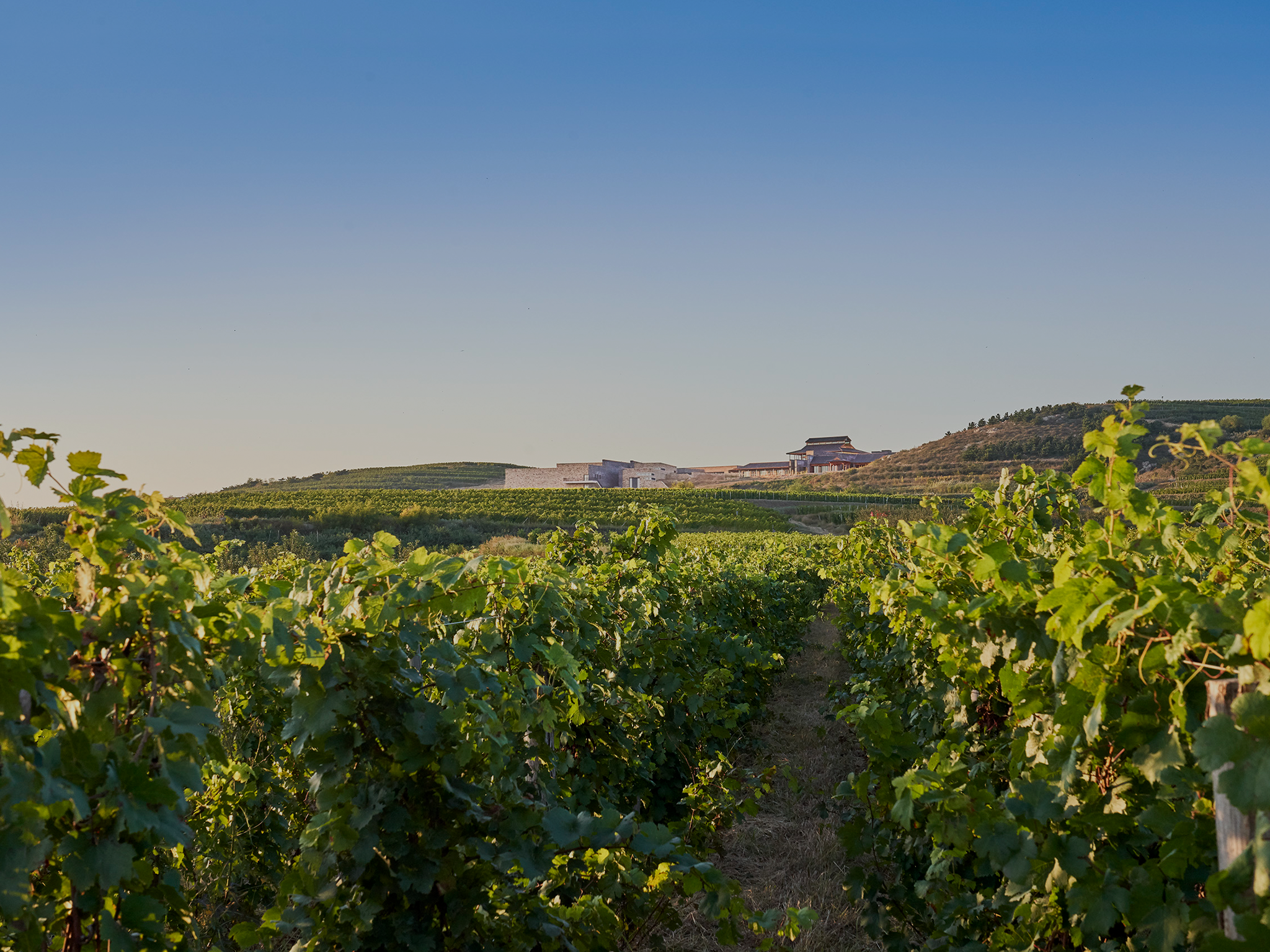Xiao Mu Lan

The vintage
The 2022 vintage was a challenging one, highlighted by two remarkable episodes: significant spring heat and the occurrence of a late typhoon. The season kicked off with a hot, dry spring, recording the highest temperatures of the last five vintages. This warm spring demanded a great deal of effort from our team of winemakers, who were responsible for irrigating the plants to ensure good growth and flowering. A rainy period set in after mid-flowering, aggravated by the passage, at the end of the season, of the remarkable typhoon Meihua bringing 300 mm of rain in 3 days. These thorny weather conditions led to major disease pressure, which severely tested the technical team, affecting yields and plot selection. To harvest the grapes at optimum ripeness, rigorous intra-parcel zoning was carried out for each terrace. Harvesting began on September 9 and ended on October 1.
Location
Domaine de Long Dai nestles in the heart of the Qiu Shan Valley in Shandong province, north-east China. The climate in this region is tempered by the influence of the Yellow Sea, about 20 km away. Highly dependent on agriculture, this region benefits from both mild winters and granite soils, making it favourable for viticulture.
Terroir
The 34-ha vineyard is spread over 420 terraces, following the agricultural tradition in the region. This planting method respects both the landscape and the soil structure but also requires a lot of manual work as well as specially adapted machines. Everything has been organised to apply high-precision viticultural methods. Disbudding and green harvesting naturally reduce yields, allowing the grapes to reach full phenolic ripeness. Winter in this region is dry and cold, but less severe than in other parts of the country. Building up soil around the feet of the vines is generally sufficient to ensure frost protection. The summer is hot and includes a short period of rain in July and August, followed by two months of dry weather during the critical ripening period. The grapes do not ripen uniformly due to the terrace system, so the harvesting of each terrace is carried out in several passes to ensure that all grapes are picked at the optimum degree of ripeness.
Winemaking
This wine is made using the saignée method. After destemming and crushing, the juice and skins are macerated for a few hours. At the end of this maceration time, the juice is drained from the bottom of the tank to separate it from the solids. Then, after settling, fermentation is started at a temperature of between 16°C and 18°C. This method gives us wines of deeper colour, and with more structure and power.
Grapes
Tasting
It has a brilliant peachy-pink color. On the nose, the wine first reveals fruity aromas of melon, followed by exotic fruits such as mango. On opening, aromas of white flowers appear. The attack is fresh on the palate, with good depth. There's a subtle hint of peach, with a lovely texture and persistence.
Downloads

